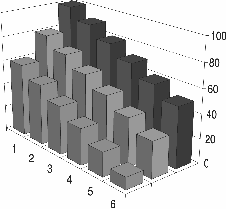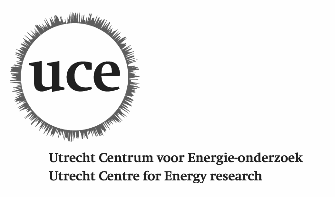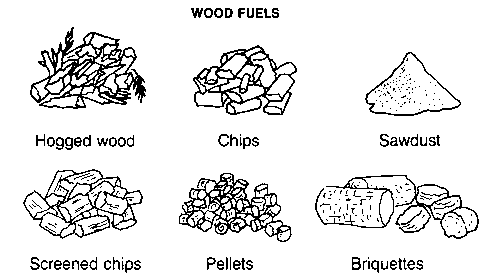 NEWS AND NOTES
NEWS AND NOTES NEWS AND NOTES
NEWS AND NOTES
The Ashden Trust has joined forces with the Whitley Awards Foundation to launch the Ashden Award for Renewable Energy. The Ashden Award is offering up to £30 000 (about US$42 700) for an outstanding renewable energy project. The aim of the award is to back a project that will provide support to a rural community in a developing country in a way that alleviates poverty and improves the quality of life, while remaining fully responsive to existing cultural values. The project would need to provide an energy source either for income generation, agricultural activities or for improving educational or healthcare facilities. The project should have an exemplary value which would encourage the use of environmentally friendly, sustainable sources of energy in similar contexts.
More information can be obtained from:
www.whitleyaward.org;
e-mail: [email protected]
Mr K.V. Ramani of the Asian and Pacific Development Centre (APDC), based in Kuala Lumpur, Malaysia, visited FAO headquarters in Rome on 2 October 2000. Mr Ramani is concurrently Coordinator of the Energy-Environment Programme of APDC and Executive Secretary of the Asia Pacific Energy-Environment Planning Network (APENPLAN).
The purpose of this visit was to inform FAO (and other
donor agencies and potential collaborating institutions) on the activities,
institutional developments and future plans of APDC. The areas of development
cooperation covered are: employment, energy development, environmental planning
and management, economic and financial management, gender, human resource
development, information technology, international trade and investment,
microfinance, microenterprise development, poverty alleviation, rural
development, small and medium industries development and urban
development.
During his visit, Mr Ramani met Mr W. Killmann, Director of the Forest Products Division, Mr Miguel Trossero, Senior Forestry Officer (Wood Energy) and Mr Changchui He of the Environment and Natural Resources Service (SDRN) of the Sustainable Development Department, and opportunities for future collaboration were explored.
Job creation has been heralded as one major contribution that bioenergy is able to provide, particularly in regions where unemployment prevails. The questions are: How much of the "job creation" vis-à-vis "employment generation" function of bioenergy do we know? How many studies have been conducted along these themes? Is this a fact or just some figures out there?
Given the global energy scenario of uncertain oil prices, gas-polluting fossil fuels, economically (still) non-competitive renewable alternatives, bioenergy stands differentiated among the other options. It is locally available and has the potential of sustainability if managed and produced properly. Apart from this claim, bioenergy is also environmentally appropriate since it is carbon-neutral; socially acceptable since it is already the traditional fuel used in almost all the countries in the world; and it provides the economy with employment opportunities.
The socio-economic contribution of bioenergy, then, is undeniably significant. Yet, it is an area that has not been well studied and written about when compared with bioenergy technology, for instance. Bioenergy, particularly woodfuel production and consumption patterns in developing countries, varies greatly from those in developed countries (e.g. in Europe). Hence, the role of employment in these variations is an interesting consideration.
A paper to survey the literature on bioenergy and its employment link is currently being prepared by Elizabeth Remedio, a professor from the University of San Carlos, Cebu City, the Philippines, who is currently serving as a Visiting Academic in FAO's Forestry Department, Rome. A more detailed exposition of the results of the study will be found in the next issue of Forest Energy Forum.
For more information, please contact:
Mr Miguel Trossero at the address given on the first page.
The 18th World Energy Council Congress on Energy Markets: the Challenges for the New Millennium will take place in Buenos Aires, Argentina, from 21 to 25 October 2001. FAO's Forest Products Division will present a paper at the Congress. The paper, entitled Bioenergy and jobs: a link to promoting sustainable energy development, will be prepared by Mr Wulf Killmann, Director, and Mr Miguel Trossero, Senior Forestry Officer (Wood Energy).
The completed paper will provide a more lengthy and comprehensive discussion of the immediate objectives of FAO's bioenergy programme to abate and mitigate climate change and explain how the increased use of bioenergy can contribute to the development of rural areas creating new investments and employment opportunities.
For more information, please contact:
Mr Miguel Trossero at the given address on the first page.
Biomass (wood as well as agricultural and forestry
residue) is an important source of energy in a vast number of households
worldwide. In most developing countries the utilization of biomass fuels for
cooking and room heating is highly inefficient and unhealthy, and considerable
research has been directed towards the development of the ways and means of
achieving efficient and emission-free utilization. To date, the bulk of R&D
has been aimed at designing stoves that use the biomass in the various forms in
which it is available. The possibility of conversion of these forms into
superior fuels (charcoal, woodgas, etc.) has not been explored to a great  extent, especially in the context of domestic cooking. The exception in this
case is the biogas technology, which involves conversion of dung and municipal
solid waste into methane, and has been well established as a branch of research
if not practical application in the field of rural energy.
extent, especially in the context of domestic cooking. The exception in this
case is the biogas technology, which involves conversion of dung and municipal
solid waste into methane, and has been well established as a branch of research
if not practical application in the field of rural energy.
Research on
the efficient utilization of biomass for cooking is being conducted worldwide
and nearly 145 researchers from more than 30 countries have come together to
form the discussion group ([email protected]) maintained by the Center for
Renewable Energy and Sustainable Technology (CREST). The informal exchange of
information through this discussion group has proved to be highly beneficial to
research activity all over the world. A need for getting together on a common
platform to facilitate face-to-face discussions and exchange of ideas, and
seeing actual demonstrations of the devices being discussed and visualized
through the virtual dialogue, has been felt for some time by the group members.
This need is the motivating factor behind the proposal to hold a conference on
the subject.
In India, the Ministry of Non-conventional Energy Sources
(MNES) has for some time been sponsoring a nationwide programme on the
development and popularization of improved biomass-burning stoves. Several
research groups in India are actively engaged in research in this field and a
large number of governmental, as well as non-governmental, establishments are
engaged in popularizing the improved stoves among rural people. Consequently, it
was felt that India would be an ideal venue for a conference of stove
researchers.
The Appropriate Rural Technology Institute (ARTI), therefore, is hosting an International Conference on Biomass-based Fuels and Cooking Systems (BFCS-2000) in Pune, India, in November 2000. This event will also provide an opportunity to Indian researchers to exchange views and information with their counterparts in other developing and developed countries. The exchange of ideas will prove highly beneficial in providing a much needed fresh impetus to the National Programme on Improved Chulha (NPIC) in India and similar programmes elsewhere in the world. (Source: www.ikweb.com/enuff/public_html/Stoves.html)
[Please see Forest Energy Forum No. 6 for more information on BFCS-2000.]
Charcoal: deforestation and environmental depletion or a sustainable energy system for the poor in Africa?
In many African cities, the most common energy source for low-income people is charcoal. The use of charcoal has been blamed for deforestation and environmental degradation of natural forests. Numerous initiatives have been taken to reduce the dependence on charcoal but most have been unsuccessful:
· most improved stoves projects have failed;
· no
alternative fuels (including electricity) have been able to compete;
· no
improved kiln project has survived the project phase of its existence;
·
trees planted for fuel were either not used at all, or at least not used for
fuel; and
· fiscal measures have chased the charcoal production sector deep into the parallel economy.
The CHAPOSA project aims to investigate the actual potential for a sustainable supply of charcoal to low-income households in urban areas of sub-Saharan Africa. The project, which is funded by the European Union and coordinated by the Stockholm Environment Institute (SEI) in Sweden, is a collaboration among research institutions in five countries in Africa and Europe: Zambia, the United Republic of Tanzania, Mozambique, Germany and Sweden. The final objective is to produce indicators for when charcoal production is not a sustainable activity, and to suggest policy options available to address such situations.
For more information, please contact:
Mr Anders Arvidson, Stockholm Environmental Institute, Box 2142, 103 14 Stockholm, Sweden.
Fax: +46 (0)8 723 03 48;
e-mail: [email protected];
www.sei.se/chaposa/chaposaresources.html; or
Dr Anders Ellegard, Coordinator, Bioquest HB, Nya Varvet 90, 426 71 Västra Frölunda, Sweden.
Fax:
+46 31 69 32 1;7
e-mail: [email protected];
http://w1.312.telia.com/~u31201161/
Cogeneration and On-Site Power Production - the magazine and the Web site - is dedicated to providing international cover of cogeneration issues, such as technology, economics, deregulation and the environmental framework. The bimonthly magazine is available on subscription (free to qualified professionals). The on-line version brings news items, selected articles from the current issue, a growing archive and full subscription information.
COSPP is published by James & James (publishers of the well-known Renewable Energy World) and the International Cogeneration Alliance, who promote clean energy production as a solution to the challenge of climate change.
For more information, please contact: James & James (Science Publishers) Ltd, 35-37 William Road, London NW1 3ER, UK.
Fax: +44 20 7387 8998;
e-mail: [email protected] ;
www.jxj.com

ENERGIA is an international network on Women and Sustainable Energy, founded in 1995 to create an institutional base for galvanizing action to strengthen the role of women in the energy sector. ENERGIA is open to both men and women from countries of the South and North interested in promoting its goal to "engender" energy and "empower" women, through the promotion of information exchange, training, research, advocacy and action aimed at sustainable energy development that is equitable for all. ENERGIA's approach is to seek to identify needed activities and actions through its membership, and then to encourage, and if possible assist, members and their institutions to undertake decentralized initiatives. ENERGIA News is
the principle vehicle for this approach.
ENERGIA News is produced jointly by Energy, Environment and Development (EED, Kurten, Germany), the Technology and Development Group (TDG, Enschede, the Netherlands) and ETC Energy (Leusden, the Netherlands) which houses the secretariat. The focus is on practice, with a conscious effort to interpret and learn from this
practice.
Subscribing to ENERGIA News is free
of charge, but ENERGIA asks in exchange that subscribers contribute to the
newsletter by sending in their own articles, letters, publications, reports,
notes, resources, announcements, photographs, news and events.
For more information, please contact:
Sheila Oparaocha, ENERGIA News Secretariat, c/o ETC Energy, Postbus 64, 3830 AB Leusden, the Netherlands.
Fax: +31 (0)33 494 0791;
e-mail: [email protected] ;
www.energia.org
[ENERGIA News was highlighted in Forest Energy Forum No. 2.]
Biomass resources are potentially the world's largest and most renewable energy source, with an annual terrestrial biomass yield of 220 billion oven-dry tonnes. In the European Union (EU), biomass currently supplies 3.5 percent of energy, representing 45 million mtoe. Looking ahead to 2010-2015, the possible energy supply from biomass in the EU is estimated at 130 mtoe. This target cannot be achieved without combing the powerful efforts of the biomass energy industry.
The European Biomass Industry Association (EUBIA) seeks to build business partnerships across Europe and beyond. The aim is to combine the activities and resources of its members - already active in the European/global market - and to create synergies for a joint significant presence of the European biomass industry in Europe and throughout the world.
EUBIA produces a newsletter that disseminates information on its activities and those of its members. (Source: EUBIA newsletter, April 2000.)
For more information, please contact:
EUBIA, Rond-Point Schuman 6, B-1040 Brussels, Belgium.
Fax: +32 228 28 424;
e-mail: [email protected]
The Global Futures Bulletin is an electronic bulletin produced by the Institute for Global Futures Research (IGFR) twice monthly and is open to contributions from readers.
For more information, please contact:
The Editor, Institute for Global Futures Research (IGFR), PO Box 263E, Earlville, Queensland 4870, Australia.
e-mail: [email protected]
Util indispensable pour la valorisation énergétique du bois, l'annuaire ITEBE pour sa deuxième édition, regroupe les coordonnées et plus de 200 entreprises ou structures à même de vous proposer matériels, services et conseils utiles au choix d'un matériel ou au montage d'un projet.

Association professionnelle de l'ensemble de la filière bois-énergie, l'ITEBE (Institut technique éuropéen du bois-énergie) rassemble différents acteurs: exploitation forestière, transformation des combustibles bois, fabrication et vente d'appareils de chauffage au bois, de réseaux de chaleur, conduits de fumée, matériel de stockage, ou encore bureaux d'études, installateurs et exploitants de chauffage. Tous les maillons d'un secteur économique ancré dans l'économie traditionnelle sont ainsi reliés entre eux dans cet ouvrage, qui est trilingue (français, anglais et allemand).
Pour plus de détails, veuillez contacter:
Institut technique éuropéen du bois-énergie, BP 149, F39004 Lons-le-Saunier Cedex, France.
Télécopie: +33 3 84478119;
mél.: [email protected]
Sugar-cane trash (dried leaves of sugar cane) resists biodegradation and cannot be used as either cattle fodder or as raw material for making compost. As a result, farmers generally burn off the trash after harvesting so as to avoid the high labour cost of removing it. In Maharashtra state, India, with 450 000 ha under sugar cane, about 4.5 million tonnes of biomass are burnt off annually in this manner. The waste biomass could be pulverized and converted to fuel briquettes; alternatively, it could be charred and converted to char briquettes. Both processes involve additional energy expenditure on the trash. The latter alternative, however, is more attractive since it leads to a charcoal-equivalent product that is higher in energy content than the wood-equivalent biomass briquettes produced by the former route.
The Appropriate Rural Technology Institute (ARTI) has developed a charring process that is especially suitable for handling large quantities of loose biomass at high speed on a continuous basis. In addition, this process is more environmentally friendly than the traditional charcoaling methods. The char, thus produced, can be converted into briquettes by a variety of well-established briquetting techniques.
The charring kiln developed by ARTI is an oven-and-retort type kiln. The oven, constructed from bricks and mud, holds one retort of 1 kg capacity at a time. The oven is loaded with a retort filled with sugar-cane trash and a fire is lit below the oven using some of the itself as fuel. As the retort heats, the trash inside is converted to char and the pyrolysis gas escapes from a hole in the lid of the retort. In this way, the fire in the firebox of the chulha and the retort inside the oven are separated by a cast-iron grate. The retort is loaded upside down in the oven so that the hole in its lid opens in the firebox. Thus, instead of venting or flaring (as in conventional charring techniques), the pyrolysis gas passes into the firebox and burns, generating more heat for charring. In other words, the pyrolysis gas contributes effectively to the charring process.

The charring of trash in one retort takes about 15 to 20 minutes. During that time, another retort can be filled with trash and kept ready. As soon as the pryolysis gas stops escaping, the retort is removed from the oven and the next one is loaded. The first retort is then cooled by pouring water onto it and subsequently emptied into a pail of water to prevent the char from catching fire. When the second retort is ready to be removed from the oven, the first retort can be cleaned and refilled with trash. Thus, there is a continuous batch process of charring.
Using this kiln, it has been possible to convert trash into char with a 30 percent conversion efficiency. In addition, with the present design 2 kg of trash need to be burnt under the oven per kg of trash converted to char. Experiments are under way to reduce the fuel requirement of the oven by improving the heat transfer efficiency from the fire to the retort in the oven. However, as long as the trash is available free of charge, even the present design is economically feasible. The cost of the char briquettes produced following this charring process is on a par with the cost of charcoal. In view of the ban on charcoaling of wood in Maharashtra state, the locally produced char briquettes could be an ideal substitute for charcoal, as well as for wood, as a domestic and industrial fuel.
There are several advantages to this oven-and-retort kiln. First, the same kiln can be used for charring any type of biomass. Another important advantage is that it operates as a continuous-batch process. Therefore, the size of the oven and the size and number of the retorts can be determined on the basis of available funds. The volume of biomass to be charred will determine the number of batches to be processed. This also means that the operator has the choice of making the kiln a centrally located, large-sized, permanent structure with the biomass being transported from other locations, or making a semi-portable, small-scale kiln that can be taken to the source of the biomass. The second option is more economical as far as loose biomass such as sugar-cane trash is concerned. This kiln can be completely dismantled and taken from one farm to another using a bullock cart, and re-erected within a day.
The research and development work involved in designing the charring kiln was funded by the Department of Science and Technology, Government of India. (Contributed by: Mr Priyadarshini Karve, India.)
For more information, please contact:
Mr Priyadarshini Karve, Appropriate Rural Technology Institute (ARTI), 2nd Floor, Maninee Apartments, S. No. 13, Opposite Pure Foods Co., Dhayarigaon, Pune 411 041, India.
e-mail: [email protected]
In Sahelian Africa, fuelwood harvesting on the outskirts
of towns and cities is degrading the natural environment, but these resources
are still more than sufficient to meet urban demand. The Centre de coopération
internationale en recherche agronomique pour le développement (CIRAD) and its
associates, the Seed and Marge consulting firms, have convinced their
institutional partners that fuelwood resources can be rationally managed when
rural communities are actively involved. The method they are advocating is based
on development plans negotiated between all stakeholders and managed by local
structures.
In the developing countries, fuelwood is by far the most
important domestic energy source. There is usually sufficient wood in the
vicinity of villages to satisfy rural demand, whereas harvesting areas around
towns and cities are tapped by both city dwellers and rural inhabitants. Highly
efficient informal structures supply urban markets with fuelwood at low cost,
despite the low one-to-two-week stock turnover time. Urban fuelwood supply
subsectors have developed with specific operators and distribution networks.
They generally focus on utilizing natural resources from areas with easy,
uncontrolled access. However, spiralling demand is resulting in rapid and
sometimes irreversible environmental degradation.
In the 1970s, a new
cycle of drought highlighted the impact of this process in Sahelian Africa. The
situation was exacerbated by the oil crisis, which tripled the price of crude
oil, affecting poor countries most severely. By analogy, the "fuelwood crisis"
concept was coined but the problem is essentially an issue of resource
management.
CIRAD and its partner Seed have sought to convince political
leaders that natural fuelwood production around towns and cities is more than
sufficient to meet the demand. Thus, rather than investing in plantations, more
rational harvesting methods should be adopted.
Peri-urban fuelwood
resources could also be preserved by getting supplies from more remote or less
accessible zones and promoting alternative sources of energy that are more
suited to urban lifestyles. Collaboration is essential in dealing with these
issues as they concern both forestry and energy policies, which are generally
handled by two separate administrative bodies.
The difficulties  experienced in the 1970s provided an opportunity for forestry administrations to
review their organizational options. In many Sahelian countries, such as the
Niger and Mali, which inherited centralized systems from their former colonial
governments, local people were not involved in forest resource management. The
forestry administrations deliver cutting permits to anyone who so requests in
return for a fixed payment. This permit entitles holders to collect or cut wood
wherever they wish. Traders and transporters tap fuelwood resources along main
roads within a 100 to 200 km radius around towns and cities, with wholesalers
taking teams of city-dwelling woodcutters into the forest by truck and bringing
them back with harvested wood. Governments are unable to control the quantities
of wood harvested. When pressure on resources becomes too high, rural
communities are powerless to prevent degradation of their land by outside
agents.
experienced in the 1970s provided an opportunity for forestry administrations to
review their organizational options. In many Sahelian countries, such as the
Niger and Mali, which inherited centralized systems from their former colonial
governments, local people were not involved in forest resource management. The
forestry administrations deliver cutting permits to anyone who so requests in
return for a fixed payment. This permit entitles holders to collect or cut wood
wherever they wish. Traders and transporters tap fuelwood resources along main
roads within a 100 to 200 km radius around towns and cities, with wholesalers
taking teams of city-dwelling woodcutters into the forest by truck and bringing
them back with harvested wood. Governments are unable to control the quantities
of wood harvested. When pressure on resources becomes too high, rural
communities are powerless to prevent degradation of their land by outside
agents.
The Niger, supported by donor agencies, was the first country to
implement institutional and tax reform in this area. This new "domestic energy
strategy" is coordinated by CIRAD and Seed. The experience acquired in the Niger
should later benefit other countries, such as Mali and Madagascar.
This
reform is based on the devolution of responsibility for forest resource
management to rural communities. It involves the development of rural markets,
i.e. fuelwood trading posts managed by local state-approved structures. This
wood is harvested in a specified local forest and then sold in the rural
markets. The forestry administration concludes an agreement with the market
management structure, which sets an annual fuelwood-harvesting quota for the
local forest according to its regeneration capacity. The forest management
regulations, which vary in complexity, define the structure and organization of
supervised or controlled rural markets.
The new tax policy is aimed at
encouraging traders and transporters to obtain their supplies from rural
markets. The new differential tax system is no longer based solely on the
quantities cut but also on the fuelwood origin and quantities hauled into town.
Anyone harvesting fuelwood or charcoal for urban consumption must pay a tax. The
tax rate induces traders, as a first choice, to get their supplies from private
forests; second, from controlled rural markets; and, last, from supervised
markets. Wood from all other origins is taxed at a more dissuasive rate. The tax
also favours trading of fuelwood from remote forests. Wood from managed forests
located 80 km from Niamey, the Niger, for example, thus becomes less expensive
than wood harvested without control just outside the city. Rural communities
receive a large share of the tax income.
The authorities are promoting
alternative energy sources to meet changes in urban consumers' requirements. For
example, there is growing urban demand for charcoal in most Sahelian countries.
The switch from fuelwood to charcoal means a two- to threefold increase in the
amount of wood harvested. The efficiency of the carbonization process must
therefore be improved. In Mali, the focus is on developing the "Casamance"
technique, while in Madagascar a small-scale study revealed that the efficiency
of the process could be improved simply by increasing the size of carbonization
pits. The government is encouraging private companies to sell energy-efficient
hearths and stoves tailored to household needs and budgets.
As part of a
programme to develop the fuelwood supply sector, CIRAD and associates are
drawing up a comprehensive plan to enhance urban supply in collaboration with
governments and rural communities.
Forest management is thus based, above all, on the rights and customs of rural communities, not simply on silvicultural criteria. The limits of harvested areas are recorded and recognized by all stakeholders. Rural markets legitimize customary rights and provide a contractual framework for the devolution of forest management responsibility to those who cross them daily. They also fulfil the needs of the authorities, which are thus able to finance and implement their projects on a large scale.
For further information, please contact:
CIRAD-Forêt, Programme forêts naturelles, BP 5035, 34032 Montpellier Cedex 1, France.
e-mail: [email protected] ;
www.cirad.fr
Para una mejor información en los países de habla hispana de los aspectos relacionados con el consumo, producción y mercadeo de los combustibles forestales y biocombustibles, en general, y para facilitar el intercambio de información con las agencias internacionales involucradas en el tema, el Grupo de Dendroenergía de la FAO inició la traducción al español de la Terminología Dendroenergética Unificada, más conocida
como UWET (Unified Wood Energy Terminology), que en breve tiempo estará
disponible. UWET surge como una propuesta ordenadora de los datos e
informaciones estadísticos del sector bioenergético, a fin de evitar confusiones
debidas al uso de una terminología que en la mayoría de los casos carece de
definiciones precisas.
UWET surge como una propuesta ordenadora de los datos e
informaciones estadísticos del sector bioenergético, a fin de evitar confusiones
debidas al uso de una terminología que en la mayoría de los casos carece de
definiciones precisas.
La propuesta ofrece, además, un
enfoque
metodológico para la obtención, organización, interpretación y presentación de
los datos estadísticos del área bioenergética, en general, y dendroenergética,
en particular, ya que hace énfasis en los sectores de consumo como punto central
para la recolección de datos, en el análisis de los flujos de combustibles y en la realización de los respectivos balances dendroenergéticos.
Para más información, dirigirse a:
Sandra Rivero, Consultora del Programa de Dendroenergía, Subdirección de Utilización de Productos Madereros y no Madereros (FOPW), Departamento Montes, FAO,
Viale delle Terme di Caracalla, 00100 Roma, Italia.
correo electrónico: [email protected]
It has been noted that the role of forest and non-forest lands may change significantly from one place to another depending upon local woodfuel demand and supply situations in different parts of a country or an administrative district. It has also been observed in areas located in close proximity to fuelwood resources (i.e. natural forests) that local people there have a tendency to rely more on these available sources to meet their domestic fuel requirements. Similarly, people living in smaller towns close to the local fuelwood resources are also dependent on local forests to meet their purchased woodfuel supply. However, rural households that are distant from the natural supply sources have either managed their alternative fuelwood supply sources in non-forest lands or supplemented their fuel requirement with other traditional fuels. Most people in larger urban centres seem to opt for alternative commercial fuels wherever they are available and affordable. Some traded woodfuels used in many large urban centres, industries and commercial establishments could also be produced from non-forest lands. This is mostly the case in areas located farther away from the natural woodfuel resources.
Which of the two supply sources is more important from the point of view of meeting the local energy needs is site- and situation-specific. Either or both could be of paramount importance in a given area depending upon local physical, social, economic and environmental conditions. The use of woodfuel, other biomass (crop or animal residues) or commercial fuels appears to depend on the access to and/or availability of alternative sources to meet the energy needs of the traditional users, including their fuel choice and mix. But the extent of this dependency is not at all clear.
Recent innovations in bioenergy technology have made it possible to convert traditional biomass fuels into different forms of commercial energy, in solid, liquid and gas forms, as well as into electricity. With the growing concerns of health, gender and world climate change, future development of this renewable, carbon-neutral (under a growth-equal, harvest-management regime) source of energy is expected to grow tremendously, both in the developed and developing countries. This trend has already become visible in many developed countries, signifying that the future demand for fuelwood is expected to grow further not only for traditional uses but also for modern energy applications. Therefore, how to meet the growing demand without causing further detriment to the existing fuelwood resources has now become an issue of paramount importance. Certainly, in RWEDP (Regional Wood Energy Development Programme) member countries, priority now should be to recognize the importance of bioenergy and integrate this issue into development policies and strategies in the energy sector. Moreover, to support sustainable bioenergy development, reform will be necessary not only on the legal and institutional fronts, but also in extension methods and support services. Furthermore, the prevailing issues of: landownership and tree tenure; production, transportation and trade in woodfuels; subsidies and cross-subsidies on commercial fuels; technology transfer and dissemination; incentives and credit facilities; and human resources, all call for adequate consideration and timely action - from the point of view of both expanding non-forest land-based woodfuel production, as well as for promoting an unhindered flow and sustainable utilization of biomass energy in the future. (Contributed by: Tara Bhattarai, Wood Energy Resources Specialist, Regional Wood Energy Development Programme [RWEDP], Bangkok, Thailand.)

Utrecht University, one of the largest universities in the Netherlands, has taken the initiative to coordinate better and further stimulate its own energy research activities and those of neighbouring institutions. In 1998, four university research groups and four external institutions decided to collaborate by setting up a common centre: Utrecht Centre for Energy Research (UCE). UCE was formally established on 18 May 1999. Collaborative research projects are undertaken by experts in the participating groups and institutions, with UCE as a small and effective centre to initiate, acquire and manage the projects. The concept has proved to be effective and, even before UCE was established, several joint research projects had been contracted. The major research focus is on the long-term energy situation, aimed at combining technical and non-technical expertise.
The following are collaborating parties:
· Department of Science, Technology and Society (STS),
Faculty of Chemistry
· Department of Interface Physics, Debye Institute
·
Department of Inorganic Chemistry, Faculty of Chemistry
· Urban Research Centre Utrecht (URU), Faculty of Geographical Sciences
· REMU Energy Distribution Company
· RIVM, National
Institute of Public Health and the Environment
· ECN, Netherlands Energy
Research Foundation
· Ecofys Energy and Environment Consultants

Given the expertise of these parties, collaborative
research is being carried out in the following areas:
· energy
efficiency (built environment and industry)
· renewable energy (particularly
biomass energy and photovoltaics);
· clean use of fossil fuels;
· energy
policy and policy instruments;
· system analysis and modelling.
UCE projects currently being undertaken focus on the Netherlands, but they will gradually expand through international energy cooperation projects and contacts with international agencies. The typical UCE projects range from setting up an inventory of Dutch university bioenergy research, carrying out a major demand and supply sectorial analysis to establish a Database Clean Energy Systems 2050 for the Netherlands, to a major four-year project with three Ph.D. students to accelerate the implementation of renewable electricity in the Netherlands. A typical example is the so-called GRAIN study (Global Restrictions on biomass Availability for Import to the Netherlands), carried out in May/June 2000 by four UCE partners (UU-STS, RIVM, ECN, Ecofys) and Wageningen University.
The GRAIN study The GRAIN study showed that the (technical) potential contribution
of bioenergy to the world's future energy supply could be very large. In
theory, energy farming on current agricultural land could contribute more
than 800 EJ, without jeopardizing the world's food supply [Note: the
present world energy demand is around 400 EJ]. Use of degraded lands
may add another 150 EJ, although this contribution will largely come from
crops with a low productivity. The growing demand for biomaterials may
require a biomass input equivalent to 20 to 50 EJ, which must be grown on
plantations when existing forests are not able to meet this growing
demand. Organic wastes and residues could possibly supply another 40 to
170 EJ, with uncertain contributions from forest residues and potentially
a very significant role for organic waste, especially when biomaterials
are used on a larger scale. In total, the upper limit of the bioenergy
potential could be more than 1 000 EJ per year. At the same time the study warns that this contribution by biomass
is by no means guaranteed. Crucial factors determining biomass
availability for energy are: · population growth and economic development; · the efficiency and productivity of food production systems that
must be adopted worldwide and the rate of their deployment, in particular
in developing countries; · feasibility of the use of marginal/degraded lands; · productivity of forests and sustainable harvest levels;
and · the (increased) utilization of biomaterials. Major transitions are required to exploit this bioenergy potential;
however, it is uncertain to what extent such transitions are feasible.
Depending on the above-mentioned factors, the bioenergy potential could
also be very low. An important recommendation to the Government of the Netherlands on
the possible future import of biomass is therefore to increase the
knowledge and insights in the possible consequences of large-scale import
of biomass energy. This can be done by setting up a limited number of
pilot projects covering the trade in bioenergy, and by monitoring these
projects very carefully, supported by research activities. The study report, which is
still partly in Dutch, partly in English, can be ordered by e-mail from
the publication centre of the Netherlands
Agency for Energy and the Environment (Novem):
[email protected]; or can be downloaded from the Web site: www.novem.org/gave (Contributed by: Mr E. Lysen, UCE, the Netherlands.)
 For more information, please contact:
For more information, please contact:
Mr Erik H. Lysen,
Managing Director, Utrecht Centre for Energy Research (UCE), Utrecht University,
Padualaan 14 (CGN), 3584 CH Utrecht, the Netherlands.
Fax: +31 30
2537601;
e-mail: [email protected];
www.uce-uu.nl
World leaders have called for the increased use of renewable energy sources to improve the quality of life, particularly in developing countries.

The official communiqué issued by the G8 meeting in Okinawa, Japan called on all stakeholders to identify the barriers to and solutions for elevating the level of renewable energy supply and distribution in developing countries. It stated that the industrialized countries would be invited to join a Task Force that will prepare concrete recommendations for consideration at the next Summit regarding "sound ways to better encourage the use of renewables in developing countries".
"We must all work to preserve a clean and sound environment for our children and grandchildren," it states. "We are strongly committed to close cooperation among ourselves and, with developing countries, to resolve as soon as possible all major outstanding issues, with a view to early entry into force of the Kyoto Protocol."
The leaders pledged to achieve a successful outcome at the Sixth Conference of the Parties (COP6) to the Framework Convention on Climate Change that will be held in November 2000 in The Hague, in order "to achieve the goals of the Kyoto Protocol through undertaking strong domestic actions and supplemental flexibility mechanisms".
The 1997 protocol signed in Japan calls on 39 industrialized countries to limit their emissions of gases that are blamed for global warming. There is a strong indication that the United States will not sign the document, and Canada is one of the nations that are not likely to sign the protocol in the absence of its largest trading partner.

"Working together and with existing institutions to encourage and facilitate investment in the development and use of sustainable energy, underpinned by enabling domestic environments, will assist in mitigating the problems of climate change and air pollution," states the communiqué. Export credit policies have significant environmental impacts, and the leaders reaffirmed their commitment to develop common environmental guidelines for export credit agencies by the next Summit. These agencies have come under increasing criticism for funding conventional energy facilities that emit large quantities of greenhouse gases.
The next summit is scheduled for 2001 in Genoa, Italy. (Source: Hedon list of 26 July 2000, quoting the G8 Communiqué Okinawa 2000 of 23 July 2000.)
For more information, please visit:
www.g8kyushu-okinawa.go.jp/e/documents/commu.html
A new initiative has been adopted by the G8 to promote Renewable Energy in developing countries. The G8 Heads of Government established a Task Force on Renewable Energy at the Okinawa Summit in July 2000. The remit of this Task Force is to identify actions that the G8 and others can take to promote a step change in the supply, distribution and use of renewable energy in developing countries.
The Task Force will report directly to the G8 Heads at their Summit in Genoa in July 2001. Dr Corrado Clini (Director-General, Department of Environment, Italy) was appointed to the Italian Presidency of the G8 in 2001 and Sir Mark Moody-Stuart (Shell) is to chair a Task Force on Renewable Energy. It was also decided to appoint an Advisory Group to the Task Force, which will be led by Mr Michael Jefferson. Mr M. Trossero, Senior Forestry Officer (Wood Energy) of FAO's Forestry Department has been invited to become a member of the Advisory Group.
The first meeting of the G8 Renewable Energy Task Force was held in Rome on 22 September 2000 with members from both G8 and non-G8 countries. The list of members reflects interest from government, industry, non-governmental organizations and international institutions. The first meeting set the scene for the work programme of the Task Force.
The next meeting of the Task Force will take place on 20 November 2000 in The Hague, the Netherlands.
For more information, please contact:
Mr Miguel Trossero
at the address given on the first page.
When you were born, you cried and the world rejoiced.
Live your life so that when you die, the world cries and you rejoice.
Old American Indian saying